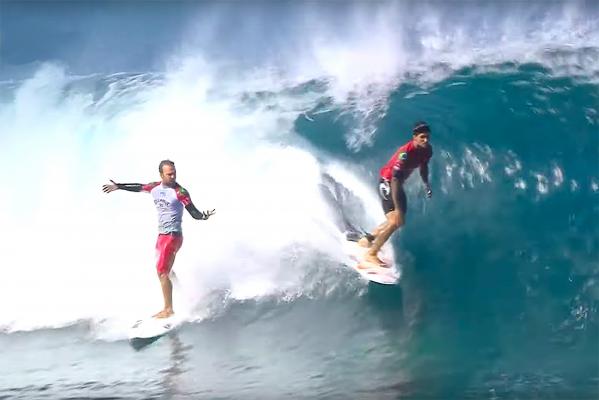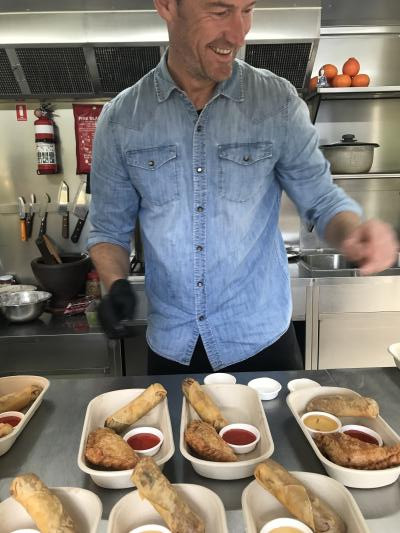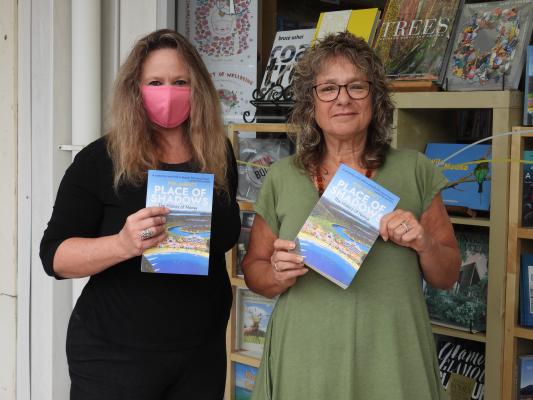Next Sunday, all things being equal, 20 men and 20 women, representing the best 17 surfing nations in the world, will participate in surfing’s Olympic debut at Chiba’s Tsurigasaki Beach, about 100 kilometres from Tokyo’s Olympic Stadium.
In a year when the entire Olympics are going to be anything but normal, and a season when there is unlikely to be quality surf at the chosen venue, surfing will finally take this historic step which has been almost 50 years in the making. Some take the romantic view that the history goes back even further, when surfing’s godfather Duke Kahanamoku won the 100 metres gold medal in Stockholm Harbour in 1912 and told officials that he wanted to see his other sport of choice in the Olympics. This may be so, but in many years of researching the great Hawaiian, I have never found evidence of it.
But once the International Surfing Federation was established in 1965, the powerful men behind the scenes took over “Duke’s Dream” and made it their own. My friend Rod Brooks, a champion surfer and one of Australia’s greatest administrators of the sport, recently posted an old newspaper cutting, showing himself, Australian Surfriders Association president Stan Couper and ISF president Eduardo Arena, in conference at the San Diego World Surfing Championships in 1972 about surfing’s Olympic aspirations.
Arena, a suave and debonair Peruvian who died only recently, did many good things for surfing but taking it to the Olympics was not one of them. The real progress on that would not begin until the world governing body had undergone a name change (to Association) and Fernando Aguerre, a member of Argentina’s national surfing team, was elected president of the ISA in 1994.
Aguerre, working alongside his brother, had already begun to accumulate a sizeable fortune through the surf and footwear company Reef International, and the gregarious Fernando, a born leader, was not averse to throwing his own money at efforts to further surfing’s cause. In 1995 Aguerre met with the then IOC President, Juan Antonio Samaranch, in Lausanne, Switzerland, where he made it clear that the inclusion of surfing in the Olympic Games would be a strategic priority for the ISA.
The ISA website notes: “Since that meeting in Lausanne, the ISA made great steps forward both in the global development of the sport and pursuing the dream of Olympic inclusion, with the ultimate goal of spreading the joy of surfing to all corners of the world. With 32 Member Nations in 1995, the ISA has now grown to 109 members … reaching non-traditional surfing markets such as Iran, Sierra Leone, and Russia, to name a few.”
While Aguerre’s attempts to bolster surfing’s numbers by going even further than the examples above and recruiting land-locked developing countries where the only people who had ever surfed were ruling class members who had done it on some foreign beach sometimes met with derision, he stuck to his guns and in 2014, the ISA was given renewed optimism under the innovative leadership of the new IOC President Thomas Bach.
Says the ISA: “Bach brought a fresh vision to the Olympics, realising the need to add youthful, vibrant sports. The door was opened for 26 sports, which included surfing and SUP, to apply for inclusion in the Tokyo 2020 Games, an opportunity that was happily welcomed by the ISA.”
Two years later, at the 129th IOC Session in Rio de Janeiro, the IOC voted to include surfing as one of five new sports for the Tokyo 2020 Games. While this was a huge personal triumph for Fernando Aguerre, and many in surfing saw it as the huge leap forward for the sport, many others were sceptical about what it would really mean for such an individualistic sport and art form.
But it has to be said that as the Games get closer, there is considerable excitement about it within the surfing world. Next week we’ll take a look at some of the leading surfers competing and evaluate their chances of success.
Margie hits the half-ton
It seems like only yesterday that freewheeling California longboarder Tom Wegener cruised into town for the surf festival and swept the gorgeous morning DJ at our local radio station off her feet while promoting a screening of his surf movie.
Well, the two kids have now grown into high-achieving adults, Tom’s an enthusiastic councillor and Margie has finally hit 50. All of which was celebrated last weekend at a lovely garden party at home for family and friends, with the Im Im Street Food truck providing the sensational two-course lunch.
Here’s to the second half, Margie!
Leanne my first customer
Frequent Noosa Today contributor Leanne Airey was the first official customer for my new Noosa history, Place of Shadows, streaking down from her hinterland home to Peregian the minute Annie’s Books got the book on display.
One of Leanne’s beautiful landscape photos is featured in the book, which is now available in all good book shops and at Noosa Longboards. And while the official book launch later this month is a sellout, Annie’s Books will host a Footpath Wine and Cheese launch on August 18. Phone Annie on 5448 2053 for more information.











